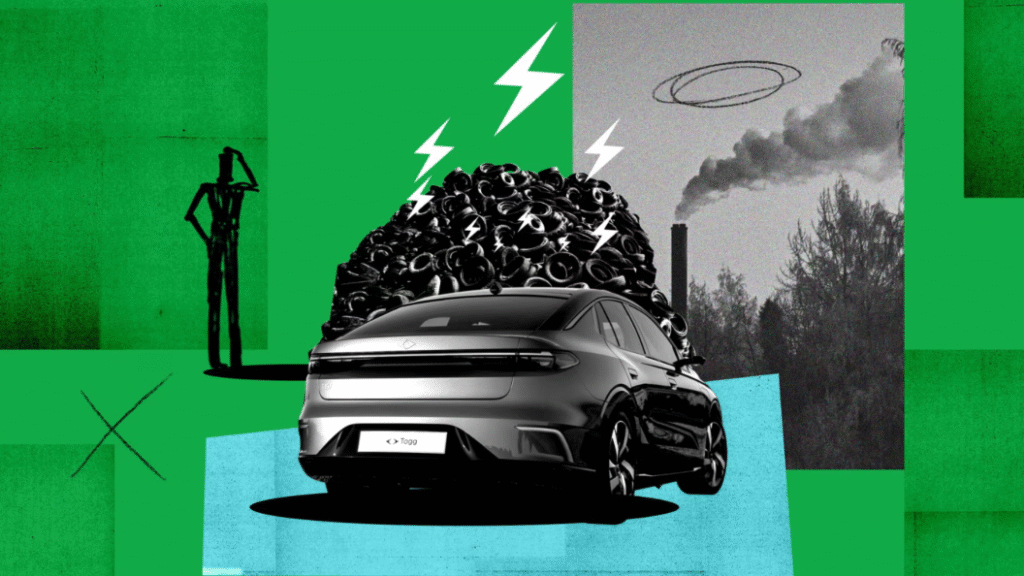Electric vehicles (EVs) are often hailed as a cleaner alternative to traditional petrol and diesel cars, playing a central role in global efforts to reduce greenhouse gas emissions. However, a growing body of research is drawing attention to a lesser-known issue: the release of harmful plastics and particulate matter from EV tyres and brakes, which is contributing to rising air pollution. Unlike tailpipe emissions, these non-exhaust pollutants result from the mechanical wear and tear of heavier vehicles like EVs, which exert more pressure on tyres, leading to increased microplastic shedding.
These tyre particles, composed largely of synthetic rubber and plastic compounds, are now recognised as a significant and growing source of airborne pollution. Because of their very tiny sizes, they stay airborne for long periods and are also fine enough to reach deep into the respiratory system. In addition to being a health hazard, these microplastics can settle into soil and water bodies, entering the food chain and disrupting aquatic and terrestrial ecosystems. This kind of pollution remains mostly unnoticed but presents significant long-term dangers to human health and the environment.
The particulate emissions from EV brakes also require scrutiny. Regenerative braking systems in EVs reduce brake pad wear to some extent, but the overall impact is offset by the additional mass of the vehicle, which still increases the overall friction and particle release rate. Furthermore, unlike tailpipe emissions, non-exhaust emissions are currently not included in most air quality regulations, making them a silent and growing contributor to urban air pollution.
In India, the concern is particularly relevant as the country rapidly expands its EV infrastructure. The surge in EV adoption, especially in cities already burdened with high levels of PM2.5 pollution, raises alarm. Urban centres may experience a shift in the type of air pollution rather than its elimination. Without updated environmental policies and vehicle design standards, the microplastic emissions from tyres and brakes could offset the benefits of zero tailpipe emissions.
While EVs are essential for reducing carbon emissions, addressing their hidden pollution challenges is critical. Solutions such as improved tyre materials, advanced filtration technologies, and inclusive regulatory frameworks are urgently needed to ensure truly sustainable and health-conscious urban mobility.

